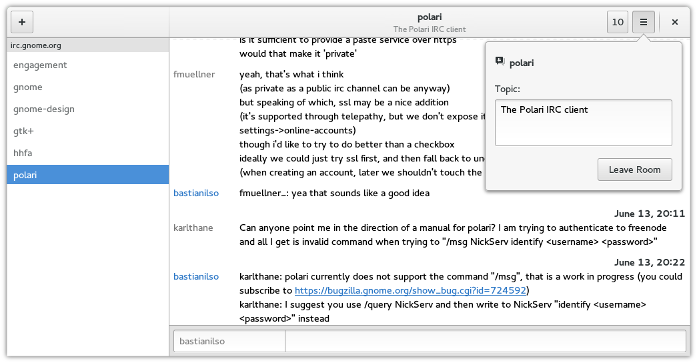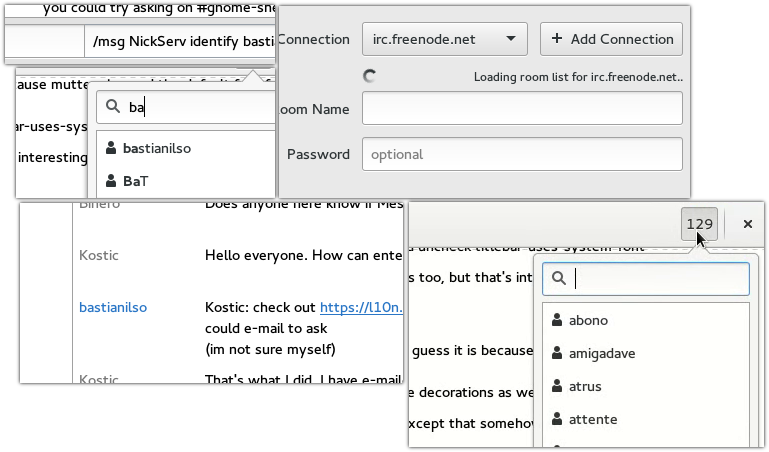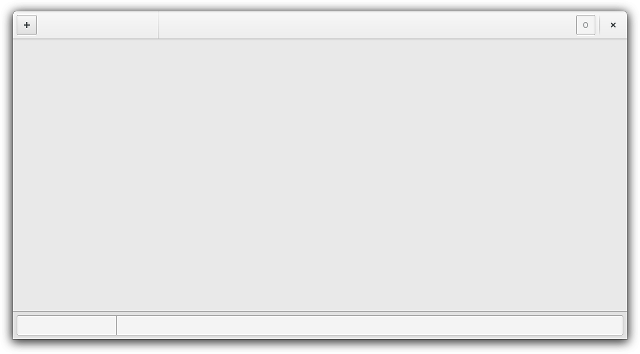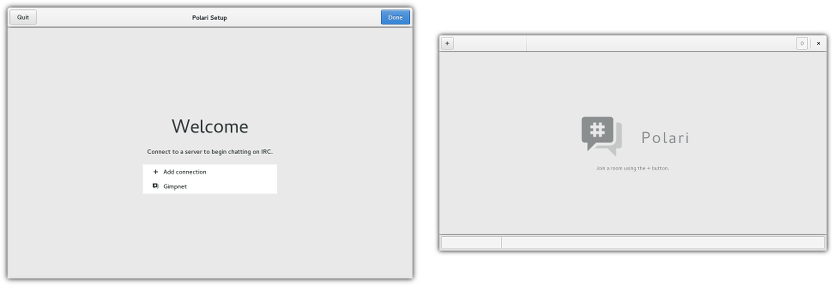In heavily populated IRC channels such as #debian on Freenode, a lot of idle IRC users are joining and leaving every couple of seconds. At the moment, we display a status message for every user in the room which in some cases results in a lot of visual noise.
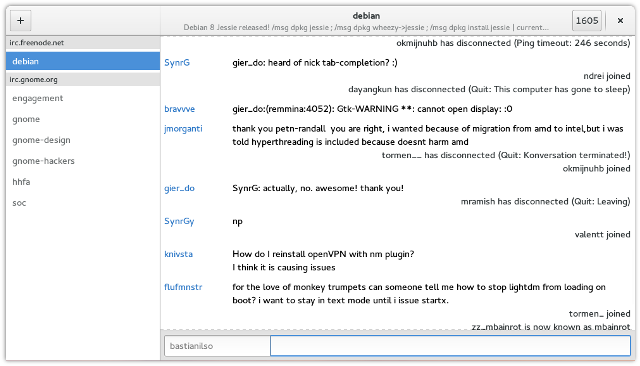 another busy day on #debian. 9 out of 17 messages in the chat view are status messages..
another busy day on #debian. 9 out of 17 messages in the chat view are status messages..
This problem is filed as bug 711542 in GNOME’s bug tracker. I have decided to try addressing this issue with some logic.
The main purpose of status messages is to indicate activity concerning a user, such as the user joining a channel, disconnecting or being renamed. The two primary use cases I see for displaying status messages in the chat view are:
- ..when a user on a channel is actively participating in a conversation, but then the user’s status suddenly changes. For anyone reading the conversation, it is interesting to know what has happened with the participating users as a change in their status can affect the conversation itself.
- ..when a channel is idle and no conversation is happening. In this case it is a convenience to display status messages. You might be waiting for someone particular to join the channel for example and thus is checking the channel occasionally to see if the person has joined the room. On the other hand, we also want to avoid flooding the chatView with status messages as it creates more unnecessary extra text to scroll through between conversations in log history.
To adress point one, I have implemented the concept of “active” users and “inactive” users. An active user is any user on the channel who has sent a message to the room within the last X* minutes. If the user is considered active, we allow any status messages related to this user to be displayed in the room.
 Only recently active users emit status messages.
Only recently active users emit status messages.
So because user Raazeer wrote “jelly, if I’m not back in ten minutes, I’ve destroyed my boot config and won’t be back today”, Polari will allow Raazeer’s status messages to be displayed the next X minutes. As can be seen in the screenshot above, a status message indicated that Raazeer disconnected shortly afterwards.
To address point 2, Polari will display status messages for any users provided there hasn’t been any conversation in the channel within the last X minutes. However, if more than 4 status messages are emitted while the channel is idling, Polari collapses the status messages and displays a single line summary instead. The summary can be expanded to reveal the details at any time.
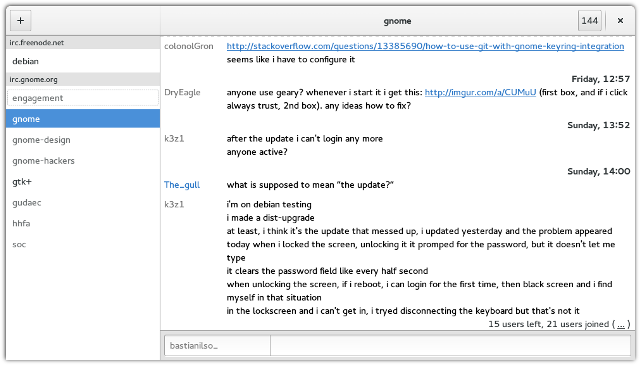 Screenshot of a status summary in action. Clicking the “…” can be clicked to reveal the status messages.
Screenshot of a status summary in action. Clicking the “…” can be clicked to reveal the status messages.
With these changes I hope we’ll have less visual noise from status messages in Polari. Feel free to have try my current branch. With problems like these, I think the best way to find out if it’s solved, is by trying it over a longer period of time.
*duration to be discussed. It’s currently set to 5 minutes, which is unfortunate for Raazeer since he said he would return in 10 minutes. Maybe a good indication that I should use a higher number? d:
